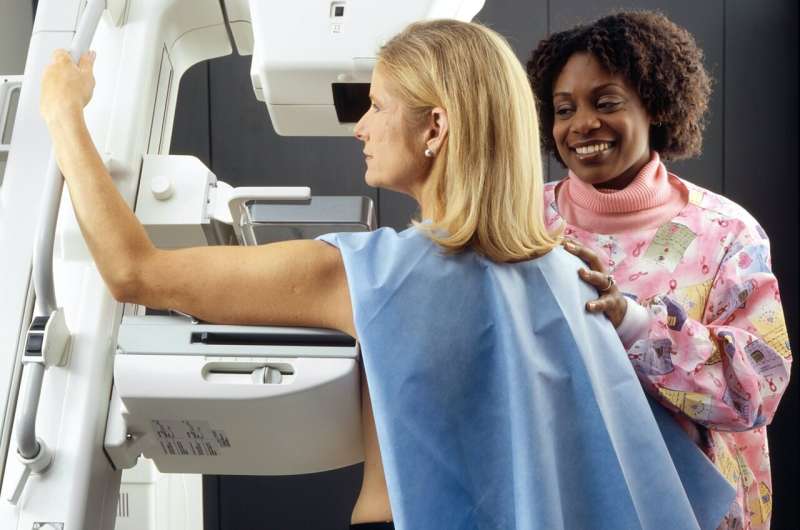
Rural women are six times more likely to get timely breast, cervical and colorectal cancer screening with remote outreach that involves interactive education and follow-up support by telephone, according to a new study.
Through the Rural Interventions for Screening Effectiveness (RISE) study, researchers with The Ohio State University Comprehensive Cancer Center—Arthur G. James Cancer Hospital and Richard J. Solove Research Institute along with researchers with the Indiana University Melvin and Bren Simon Comprehensive Cancer Center compared the effectiveness of outreach methods designed to increase cancer screening adherence among women (biologically female) living in a rural area with limited access to health care services.
They recruited 983 women between the ages of 50 and 74 from 98 rural counties in Ohio and Indiana. The women had no previous cancer diagnoses and were not up to date on one or more of the evidence-based cancer screenings recommended by the U.S. Preventive Services Task Force.
Study participants were randomly assigned to one of three intervention groups:
- Usual care—meaning no intervention except study newsletters
- A mailed interactive DVD with prompts to personalize educational information for recipients about screening tests as well as information to schedule screenings
- The same mailed interactive DVD with the additional follow-up support calls from a patient navigator to answer additional questions, address barriers to screening, and assist with scheduling directly
While evidence-based screening tests exist for breast, cervical and colorectal cancer, adherence with these tests remains lower than expected—particularly among historically at-risk populations, including rural communities, minorities and people of lower education and income.
"Women are dying every day of cancers that could have been prevented or detected in precancerous stages with timely cancer screening. This is not a new problem—but it is one of paramount importance to reduce the burden of cancer in our country, especially among those who are historically at increased risk due to socioeconomic factors," said Electra Paskett, Ph.D., MSPH, who serves as co-principal investigator of the RISE study and co-director of the OSUCCC—James Cancer Control Program.
Data from the study suggest the combination of a remotely delivered interactive DVD and patient navigation services is a highly effective and relatively low-cost way to improve cancer screening rates among rural women. Specifically, while all women who received the DVD intervention were twice as likely to become up to date with all screenings, the women who also received patient navigation support in addition to the DVD were almost six times more likely to have obtained all three screenings compared to women in the usual care arm.
This is the first large-scale evaluation of a remote intervention approach focused on a multiple screenings. All other studies to date have focused on a single or two screening(s)—breast, cervical or colorectal.
The team reports its findings April 28 in JAMA Network Open. Researchers note that remotely delivered, targeted outreach to women in this difficult-to-reach population is highly effective at relatively modest cost.
"Results of this study yield important data to carry out interventions that increase cancer screening in rural women," said Victoria Champion, Ph.D., R.N., Regenstrief Institute affiliated scientist and Indiana University School of Nursing distinguished professor of nursing. "First, it is possible and effective to combine interventions that support breast, cervical and colon cancer screening yielding a holistic approach to early detection of cancer. Secondly, we have technology available to overcome previous barriers such as rurality and access to care. Finally, this holistic approach to cancer prevention and screening could be adapted to other behaviors that would also serve to reduce our national cancer burden."
Regarding cost effectiveness, the study authors note, "Compared to treating cancer, the costs of each intervention to bring women up to date with screening were relatively modest. The average cancer treatment costs $150,000 per patient in the U.S., so the additional costs required for the addition of patient navigators to improve screening likely can result in cost savings by avoiding cancer deaths or treatment at more advanced stages."
Study authors note the study was limited by a mostly white, highly educated patient population. As internet access continues to expand into rural areas, there is also potential to explore online educational tools in future outreach efforts.








 User Center
User Center My Training Class
My Training Class Feedback
Feedback












Comments
Something to say?
Log in or Sign up for free